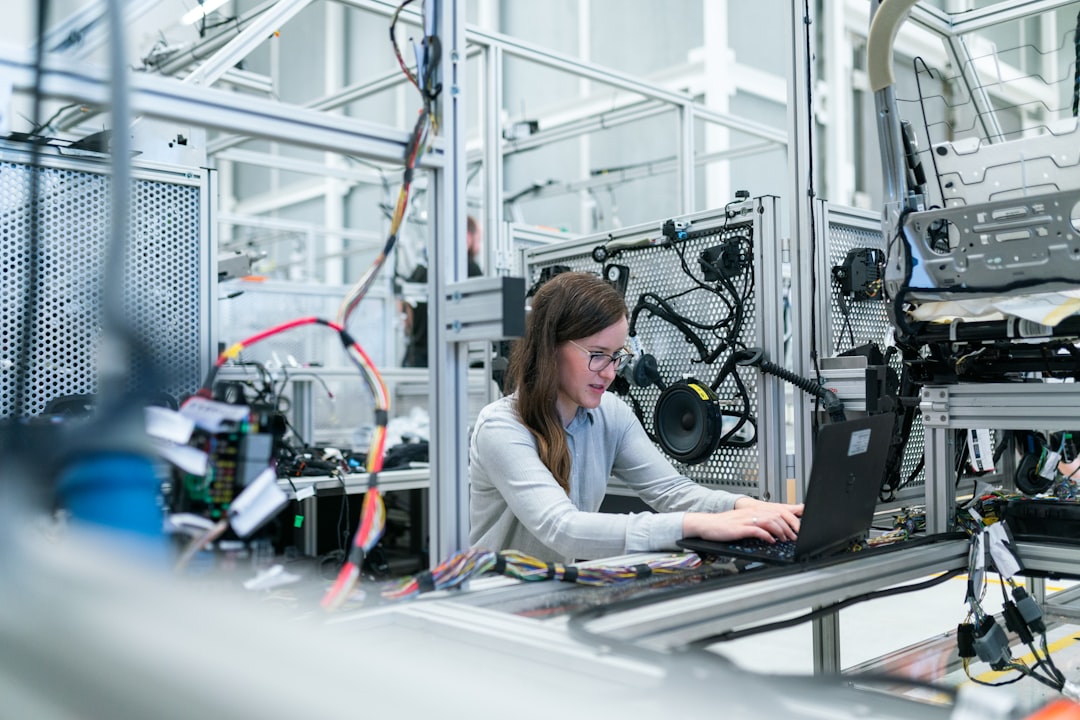Unlock encrypted content
Please enter your SSCE key to initiate on-the-fly decryption.
Decryption key: (Click cancel if you don't have the key)
Copied link to clipboard.
This feature is unavailable for free accounts. Upgrade now and enjoy all Premium benefits.
Go Premium!
This feature is unavailable for free accounts. Upgrade now and enjoy all Premium benefits.
Go Premium!
Please open this page in browser ( Google Chrome or Safari ) to use this feature.
Open In Browser
Spatial Computing, Video Storage, and Biometric Authentication: The Future of Data Management in 2030.
Random related video for this blog.
Copied share link to clipboard.
In the rapidly evolving digital landscape, advancements in technology continue to shape the way we interact with data. As we look towards the future, several key trends emerge that will revolutionize data management in the year 2030. From spatial computing and video storage to biometric authentication and efficient data replication, these innovations are set to transform the way we store, access, and secure our valuable information.
Spatial Computing: Redefining User Experience
One of the most exciting developments in data management is the rise of spatial computing. This technology combines virtual reality, augmented reality, and mixed reality to create immersive digital experiences. By integrating the physical and digital worlds, spatial computing enables users to interact with data in new and exciting ways. Imagine a world where you can visualize complex data sets in 3D, manipulate them with gestures, and collaborate with colleagues in real-time, regardless of their physical location. Spatial computing has the potential to revolutionize industries such as architecture, engineering, and healthcare, where visualizing and interacting with data is crucial. For example, architects can use spatial computing to create virtual walkthroughs of buildings before they are constructed, allowing clients to experience the space and make informed decisions. In healthcare, surgeons can use augmented reality to overlay patient information directly onto their field of view, enhancing precision and reducing the risk of errors.Video Storage: Managing the Data Explosion
The proliferation of video content has led to an explosion of data that needs to be stored and managed efficiently. In 2030, video storage solutions will play a critical role in enabling organizations to handle the ever-increasing volume of video data. Traditional storage methods, such as hard drives and physical servers, will no longer suffice. Instead, organizations will turn to cloud-based video storage solutions that offer scalability, accessibility, and cost-effectiveness. These solutionsleverage the power of the cloud to store and stream videos securely, allowing users to access their content from anywhere, at any time. Furthermore, advancements in video compression algorithms and encoding techniques will enable organizations to store and transmit high-quality videos without consuming excessive bandwidth or storage space. This will be particularly beneficial for industries such as media and entertainment, where video content is a primary driver of engagement and revenue.
Biometric Authentication: Enhancing Security and Convenience
As cyber threats become more sophisticated, traditional password-based authentication methods are no longer sufficient to protect sensitive data. In 2030, biometric authentication will become the norm, offering a more secure and convenient way to access and protect data. Biometric authentication relies on unique physical or behavioral characteristics, such as fingerprints, facial recognition, or voice patterns, to verify a user's identity. By leveraging these inherent traits, organizations can significantly enhance security while eliminating the need for complex passwords that are prone to hacking and user forgetfulness. Imagine a world where you can unlock your smartphone or access your computer simply by looking at it or placing your finger on a sensor. Biometric authentication not only provides a more secure authentication method but also offers a seamless user experience, eliminating the need to remember and enter passwords.Efficient Data Replication: Ensuring Data Redundancy and Availability
Data replication is a critical aspect of data management, ensuring that data is duplicated across multiple locations for redundancy and availability. In 2030, advancements in efficient data replication techniques will enable organizations to replicate and synchronize data in real-time, minimizing the risk of data loss and downtime. Traditionally, data replication has been a resource-intensive process that requires significant bandwidth and storage capacity. However, with the advent of technologies such as distributed file systems and content delivery networks (CDNs), organizations can replicate data efficiently and ensure its availability to users across different geographical locations. For example, a multinational corporation can replicate its critical data across multiple data centers around the world, ensuring that employees can access the data quickly, regardless of their location. Similarly, in the event of a natural disaster or system failure, organizations can quickly switch to replicated data sources, minimizing downtime and ensuring business continuity.Automation and Job Displacement: The Changing Workforce Landscape
Automation has been a significant trend in various industries, and by 2030, it will have a profound impact on the workforce landscape. While automation brings several benefits, such as increased efficiency and productivity, it also raises concerns about job displacement. As automation technologies continue to evolve, routine and repetitive tasks will be automated, freeing up human workers to focus on more complex and creative endeavors. However, this shift will require reskilling and upskilling of the workforce to adapt to the changing demands of the job market. For example, in the manufacturing industry, robots and autonomous systems will take over tasks that were previously performed by human workers, such as assembly line operations. This will require workers to acquire new skills in areas such as robotics programming, maintenance, and supervision.Quantum Computing: Unlocking Unprecedented Computing Power
Quantum computing is poised to revolutionize data management by unlocking unprecedented computing power and solving complex problems that are currently intractable for classical computers. In 2030, quantum computing will become more accessible, enabling organizations to harness its capabilities for data-intensive tasks. Unlike classical computers that use bits to represent information as either 0 or 1, quantum computers use quantum bits, or qubits, which can exist in multiple states simultaneously. This property, known as superposition, allows quantum computers to perform computations in parallel, leading to exponential speedup for certain algorithms. For example, in the field of cryptography, quantum computers have the potential to break currently used encryption algorithms, rendering sensitive data vulnerable. However, they can also be used to develop quantum-resistant encryption methods that will ensure data security in the quantum era.Autonomous Vehicles: Transforming Transportation and Mobility
Autonomous vehicles, including both self-driving cars and unmanned drones, will revolutionize transportation and mobility in 2030. These vehicles rely on a combination of sensors, artificial intelligence, and advanced algorithms to navigate and interact with their surroundings without human intervention. The widespread adoption of autonomous vehicles will have far-reaching implications for data management. These vehicles generate vast amounts of data, including sensor readings, GPS coordinates, and video feeds, which need to be processed and analyzed in real-time to ensure safe and efficient operation. Additionally, autonomous vehicles require reliable and low-latency communication networks to transmit data to and from the cloud for tasks such as route optimization, traffic management, and remote monitoring. This will drive the demand for advanced networking technologies, such as 5G and edge computing, to support the data-intensive requirements of autonomous vehicles.Electric Vehicles: Green Data Management
As the world continues to grapple with the effects of climate change, the adoption of electric vehicles (EVs) will play a crucial role in reducing carbon emissions and transitioning to a sustainable future. By 2030, EVs will become mainstream, leading to a significant shift in the automotive industry and data management practices. EVs rely on sophisticated battery management systems that collect and analyze data to optimize performance, maximize range, and prolong battery life. This data includes information about charging patterns, energy consumption, and battery health, which is crucial for both vehicle manufacturers and EV owners. To support the widespread adoption of EVs, data management systems will need to evolve to handle the increased volume and complexity of EV-related data. This will include robust data analytics platforms that can extract valuable insights from the data, enabling manufacturers to improve vehicle performance, optimize charging infrastructure, and enhance the overall user experience.File Access Auditing Technology in 2030: Strengthening Data Security
As data becomes increasingly valuable and susceptible to cyber threats, organizations must prioritize data security and implement robust access control mechanisms. In 2030, file access auditing technology will play a critical role in strengthening data security by monitoring and recording user access to sensitive files. File access auditing technology enables organizations to track and analyze user interactions with files, including who accessed the file, when it was accessed, and what actions were performed. This level of visibility allows organizations to detect and investigate suspicious activities, mitigate insider threats, and comply with regulatory requirements. For example, in the healthcare industry, file access auditing can help prevent unauthorized access to patient records, ensuring compliance with privacy regulations such as the Health Insurance Portability and Accountability Act (HIPAA). Similarly, in the financial sector, file access auditing can help detect and prevent data breaches, protecting sensitive customer information. In conclusion, the future of data management in 2030 will be characterized by advancements in spatial computing, video storage, biometric authentication, efficient data replication, automation, quantum computing, autonomous vehicles, electric vehicles, and file access auditing technology. These innovations will not only enhance the way we store, access, and secure data but also transform industries and redefine user experiences. To stay ahead in this rapidly evolving landscape, organizations must embrace these trends and leverage the power of technology to unlock new possibilities and drive innovation.By Amelia Isabella
Email: [email protected]
Related
The Future of File Management: Embracing IoT, Automation, and Innovative...
October 3, 2024
Read More
The Future of Technology: Innovations in Secure Cloud Storage, Autonomous...
October 6, 2024
Read More
The Future of File Management: Exploring Real-Time Collaboration, Remote Backup,...
October 13, 2024
Read More
The Future of Technology: Exploring Augmented Reality, Cloud Storage, and...
October 16, 2024
Read More
The Future of Data Management: Exploring Compliance-Ready Storage Solutions and...
October 16, 2024
Read More
The Future of Technology: Exploring Cloud Storage Benefits, Vehicle Automation,...
October 17, 2024
Read More
Cutting-Edge Innovations: Exploring FileLu.com’s Smart Solutions for Global File Sharing...
October 17, 2024
Read More
Cloud Storage Solutions: Enhancing Business Efficiency with Advanced Metadata Management...
October 17, 2024
Read More
The Future of Data Management: Exploring Advanced Tools for Photographers...
October 17, 2024
Read More
The Future of Digital Transformation: Efficient Data Management and Its...
October 17, 2024
Read More
The Future of Document Management: Exploring Cognitive Robotics, Blockchain, and...
October 17, 2024
Read More
The Future of Cloud Storage: Transforming Photography and Business with...
October 17, 2024
Read More
Cloud Storage Solutions for Collaborative Work: Enhancing Productivity with Advanced...
October 17, 2024
Read More
Exploring the Intersection of Blockchain Technology and Secure File Sharing...
October 17, 2024
Read More
Popular
Latest
The Future of Digital Transformation: Exploring Smart Homes, Efficient File...
November 30, 2025
Read More
Exploring the Benefits of Cloud Storage and Innovative Technologies in...
November 26, 2025
Read More
The Future of Technology: Exploring Biohacking, Space Tourism, and Digital...
November 23, 2025
Read More
The Future of File Sharing: Streamlined Workflows for Photographers and...
November 19, 2025
Read More
Exploring the Intersection of Technology: From Cybersecurity to Augmented Reality...
November 16, 2025
Read More
The Future of File Management: Embracing Edge Computing and Efficient...
November 12, 2025
Read More
The Future of File Sharing: Exploring User-Friendly Solutions and Data...
November 5, 2025
Read More
The Future of Cloud Storage: How FileLu Empowers Creative Professionals...
November 2, 2025
Read More
The Future of Autonomous Technologies: Innovations in Robotics, File Sharing,...
October 29, 2025
Read More
Emerging Technologies Revolutionizing File Management: From Li-Fi to Robust Collaboration...
October 26, 2025
Read More
Emerging Technologies: Exploring the Impact of File Access Auditing, Genetic...
October 19, 2025
Read More
The Future of Data Storage: Exploring Advanced Encryption, Mobile Integration,...
October 5, 2025
Read More
Exploring the Future of Data Management: Security, Efficiency, and Cognitive...
September 28, 2025
Read More
Revolutionizing Data Management: Innovations in Storage, Security, and Sustainable Technology.
September 24, 2025
Read More












